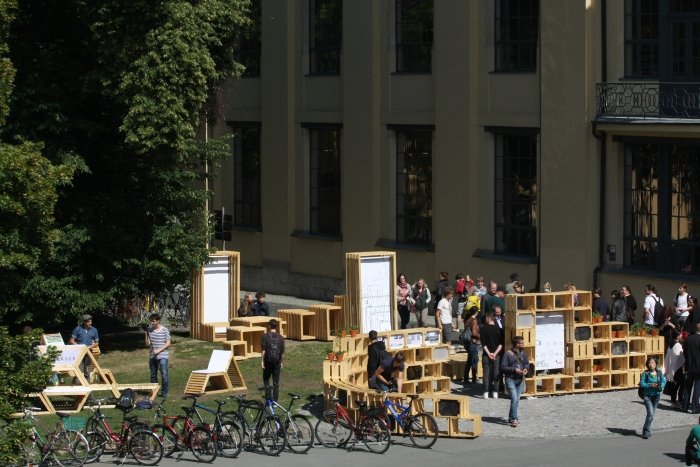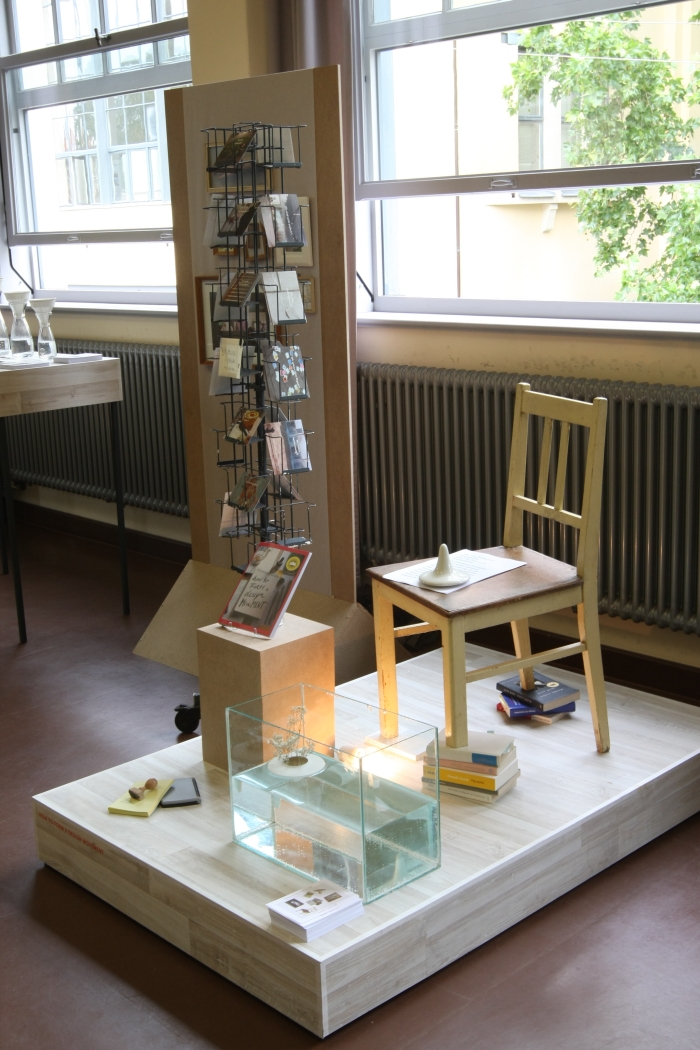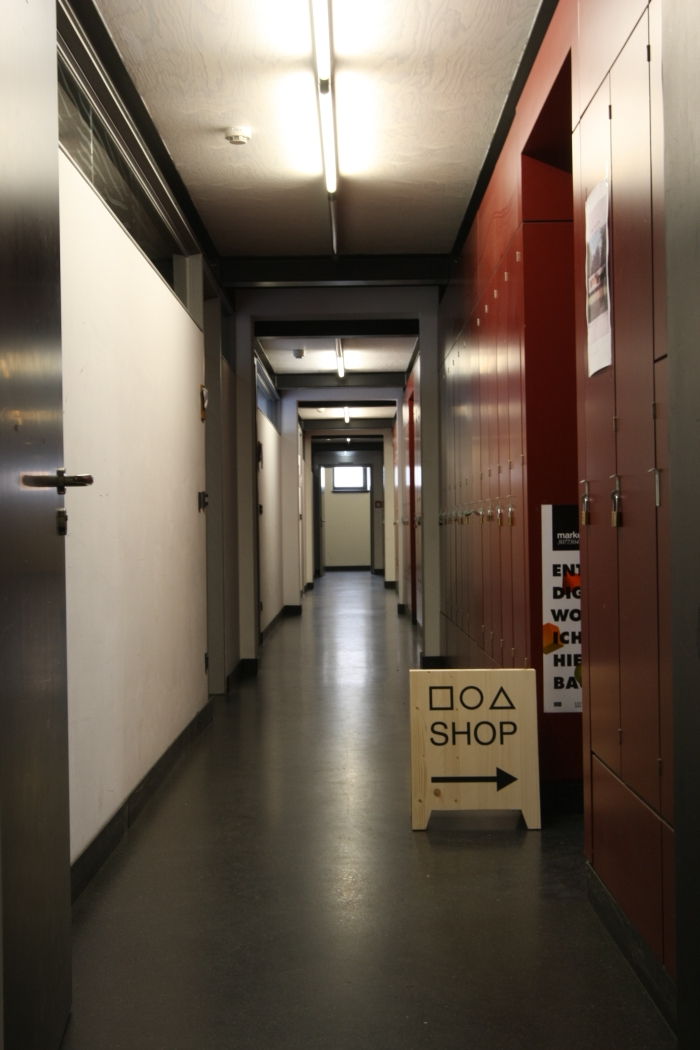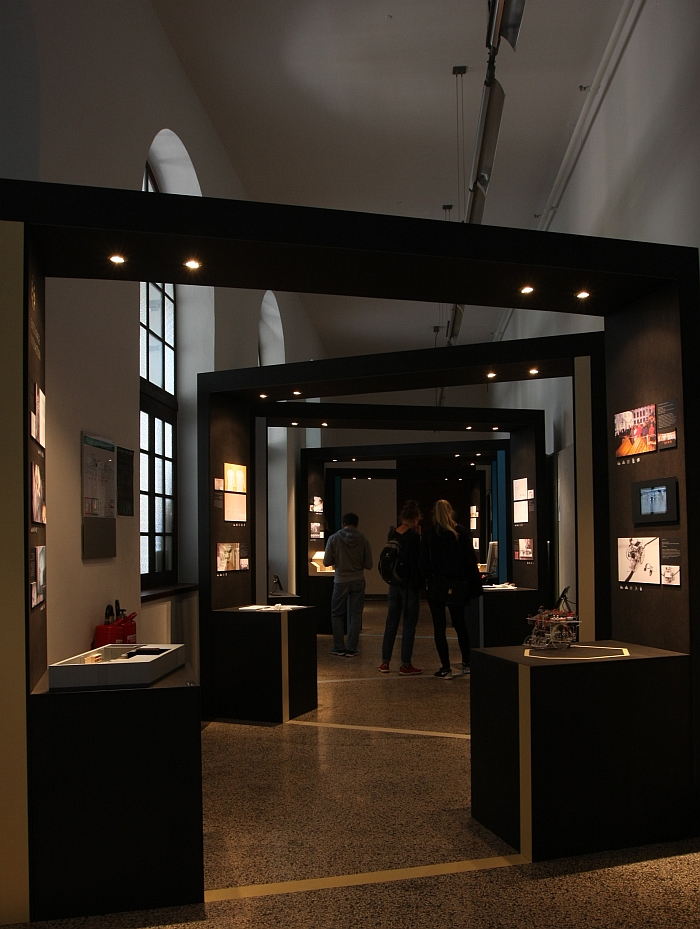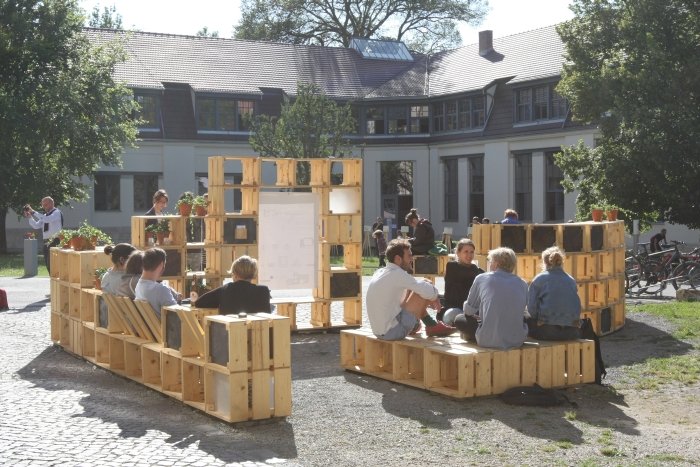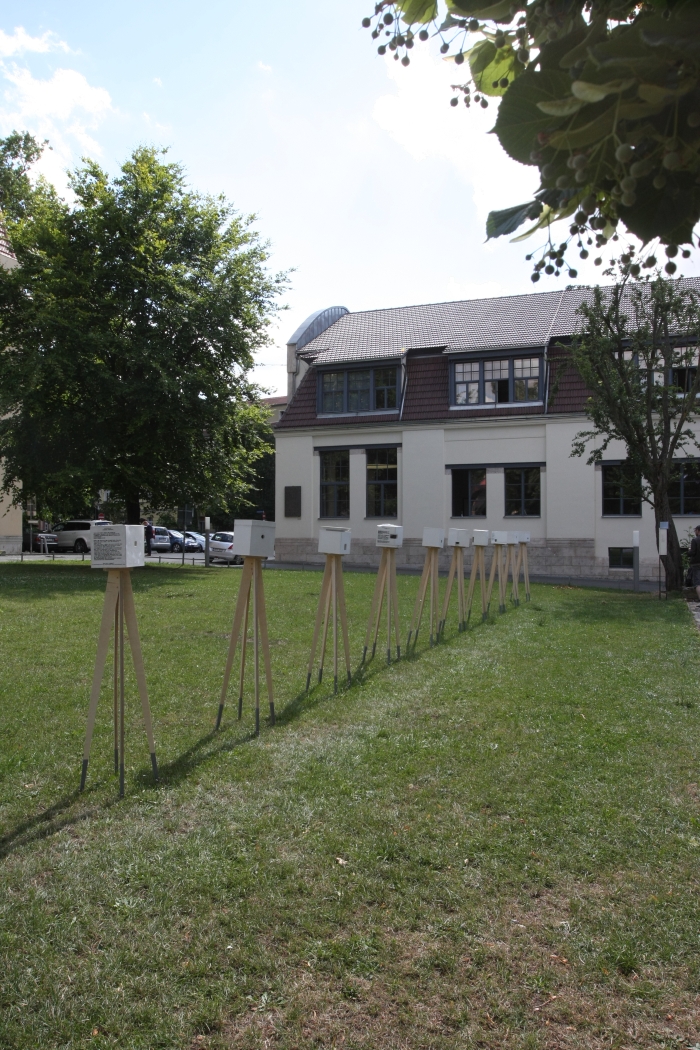On the evening of Thursday June 9th Bauhaus University Weimar formally opened the 2015 edition of their annual Summaery end of year exhibition; thus, and equally formally, launching our 2015 summer tour of student showcases.
For all in or near Weimar this weekend, Summaery 2015 runs at the Bauhaus University Weimar, and at locations throughout the town, until 6pm on Sunday July 12th, full details can be found at www.uni-weimar.de/summaery, and here three design projects which particularly caught our attention:
Barbecue by Felicia Schneeweis A couple of years ago we noted that despite the cultural and social relevance of the barbecue only very few designers have ever devoted themselves to such, before adding "wouldn’t it be delightful if one or the other contemporary designer did turn their mind to the subject." Felicia Schneeweis obviously heard our plea and the result is a delightfully formed, if sadly unnamed, sheet steel barbecue. Developed in context of the class "Better Structures", Felicia's barbecue is laser cut from a flat piece of sheet steel and subsequently pulled out to create a 3D object - a process very similar to that employed by Berlin studio e27 for their Loll and Sepia projects for pulpo, and thus an object with a very similar aesthetic and easy accessibility. We're fans of e27; we're fans of anything that reminds us of that. What we particularly like about the barbecue is that it is essentially an open source project and one perfectly suited for decentralised production. As we believe we've said in the past, the future of the home accessories market, and potentially the furniture market, is objects made locally to order at the point of sale. The increasing sophistication of the necessary technology combined with an understanding that "centralised production + global distribution = resource misuse" will result in a future where rather than buying a pre-produced product you visit a shop choose your preferred material, and the service provider cuts/forms/prints as required. A process which in the case of Felicia's barbecue means you choose the colour of powder coated steel, it's lasered, you take your flat barbecue home and gently pull it up to use. Which as a concept is every bit as delightful as Felicia's barbecue. Sharper eyed readers will have noted that Felicia Schneeweis featured in our review of Summaery 2014, just to be clear we have no relationship be that personal or professional with Felicia, her work obviously just speaks to us. And we're thoroughly looking forward to discovering if that remains the case......
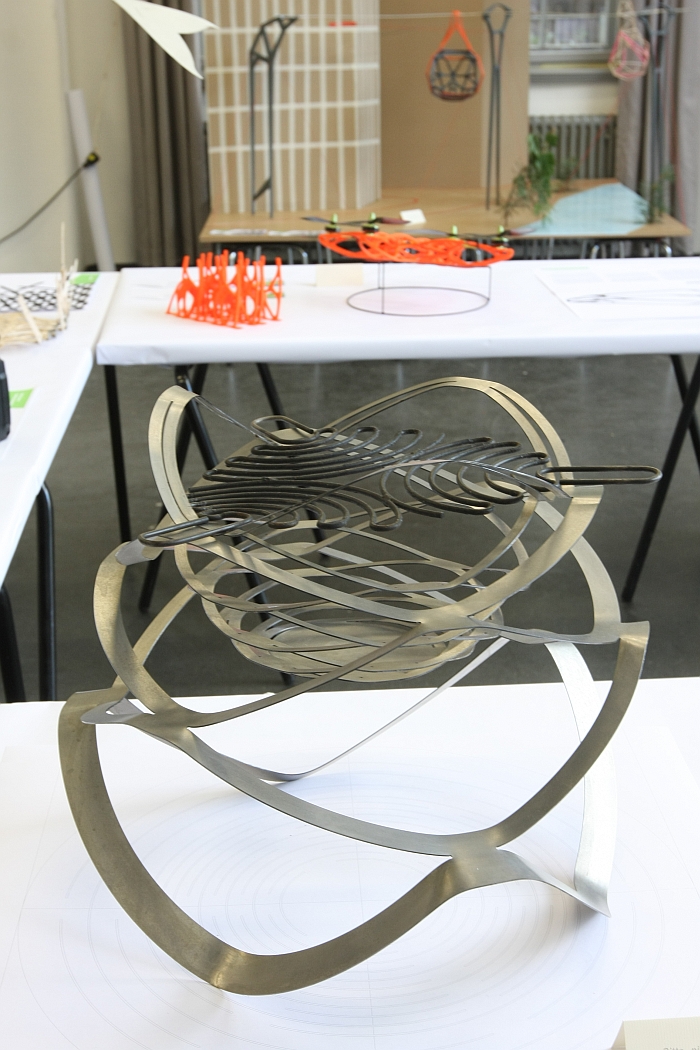
Kusafisha Maij by Robert Hofmann and Damian Henn To begin with we have no idea if this concept works, and no idea if similar systems exist; however, regardless of the answers to the questions we were greatly impressed with Kusafisha Maij by Robert Hofmann and Damian Henn. Essentially a small tent, or large pyramid tea bag, the idea, if we've correctly understood it, is that you fill the bottom of the tent/tea bag with salt water, under the heat of the sun the water evaporates, condenses on the inside wall and runs down as potable water into little collecting bags from whence it can be recovered and consumed. Genius. Over the years we've seen numerous systems for retrieving drinking water from salt water, but generally they require labour intensive, complicated static systems - indeed a couple of just such systems created in context of a different course are currently on display in the courtyard of the Bauhaus Uni Weimar. The beauty of Kusafisha Maij - and assuming it works, which we don't know if it does - is that not only does it provide a cheap, low-tech, universally applicable mobile system but is also a system which can be scaled down into a foldable object which can be stowed in liferafts, or simply kept as an emergency aid on fishing boats, sailing ships and other vessels that venture onto the high seas without a properly stocked bar. In addition we must add that Kusafisha Maij was created in context of the course "H2O" under the supervision of Professor Martin Kuban and which asked the students to identify product design relevant aspects in context of water and develop a concept therefrom; and whereas all the other students produced objects to encourage and promote greater use of water, Robert Hofmann and Damian Henn were the only students who treated water as the increasingly valuable commodity it is. Which is of course the correct way for any designer to approach such a brief.
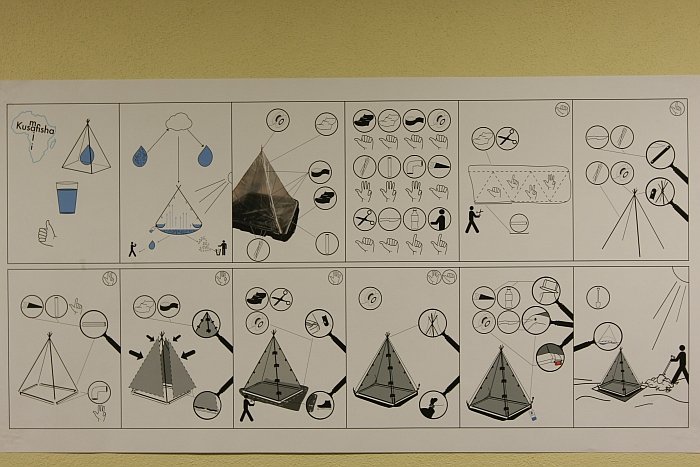
As we recently noted, the essence of Michael Thonet's famous 3D steamed wood bending method is and was the use of a piece of metal along the future outer edge of the wood, a piece of metal which forces the wood to behave differently under stress than it would normally. Utilising a very similar principle Roy Müller attaches an external coating to pieces of wood which have been subject to heat and pressure, and steams them. The result is the wood takes on a new form, defined by the external coating and instigated by just the effects of the steam and without the need to apply any mechanical pressure. Developed in context of his Bachelor Thesis and in cooperation with the Technische Universität Dresden, Roy's process, we would imagine, is only going to work with certain types of woods and allow for forming in certain ways; however, from the models on show in Weimar we wouldn't class such as limitations and the number of possible applications would appear to be large enough to justify serious investigation of where the genuine limits are and the industrial applicability of the process.
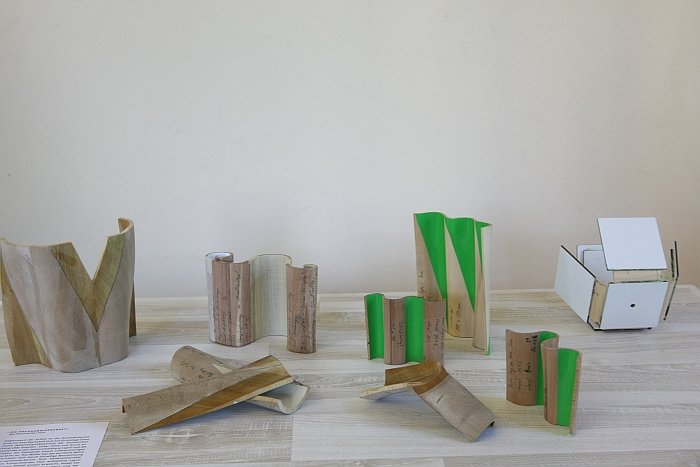
In addition to the above projects we were very taken with Atmos by Jakob Kukula which presented a sort of cross between the Dialogue biofeedback "wallpaper" by studio Alissa + Nienke and Holon by Jetske Visser & Michiel Martens as featured in the Dutch Invertuals Body Features showcase in a lamp that elongates and constricts in rhythm with your breathing; How to Form a Design Movement by Lisa Hoffmann opened a whole box of worms we fear it may take a while to close; the furniture concepts for the German National Garden Festival 2021 in Erfurt produced a couple of very nice ideas, for all the object Gute.Stube particularly appealed, and also produced one concept which in its formal rigidity underscored just how good Intersections by Izabela Bołoz really is; and we also saw a desk concept which we really, really did not like, but which did get us thinking about a desk concept which we might, possibly, really, really like if anyone gets round to developing it. Which is of course the whole joy in visiting such a student showcase, being inspired, motivated, aggravated, offended, amused, confused and, ultimately, smitten.
